#Top CSS frameworks 2025
Explore tagged Tumblr posts
Text
#Best CSS frameworks for developers#CSS frameworks for modern web apps#CSS frameworks for responsive design#Modern CSS frameworks 2025#Most popular CSS frameworks#Top CSS frameworks 2025#Top frontend frameworks 2025
0 notes
Text
Top 10 In- Demand Tech Jobs in 2025

Technology is growing faster than ever, and so is the need for skilled professionals in the field. From artificial intelligence to cloud computing, businesses are looking for experts who can keep up with the latest advancements. These tech jobs not only pay well but also offer great career growth and exciting challenges.
In this blog, we’ll look at the top 10 tech jobs that are in high demand today. Whether you’re starting your career or thinking of learning new skills, these jobs can help you plan a bright future in the tech world.
1. AI and Machine Learning Specialists
Artificial Intelligence (AI) and Machine Learning are changing the game by helping machines learn and improve on their own without needing step-by-step instructions. They’re being used in many areas, like chatbots, spotting fraud, and predicting trends.
Key Skills: Python, TensorFlow, PyTorch, data analysis, deep learning, and natural language processing (NLP).
Industries Hiring: Healthcare, finance, retail, and manufacturing.
Career Tip: Keep up with AI and machine learning by working on projects and getting an AI certification. Joining AI hackathons helps you learn and meet others in the field.
2. Data Scientists
Data scientists work with large sets of data to find patterns, trends, and useful insights that help businesses make smart decisions. They play a key role in everything from personalized marketing to predicting health outcomes.
Key Skills: Data visualization, statistical analysis, R, Python, SQL, and data mining.
Industries Hiring: E-commerce, telecommunications, and pharmaceuticals.
Career Tip: Work with real-world data and build a strong portfolio to showcase your skills. Earning certifications in data science tools can help you stand out.
3. Cloud Computing Engineers: These professionals create and manage cloud systems that allow businesses to store data and run apps without needing physical servers, making operations more efficient.
Key Skills: AWS, Azure, Google Cloud Platform (GCP), DevOps, and containerization (Docker, Kubernetes).
Industries Hiring: IT services, startups, and enterprises undergoing digital transformation.
Career Tip: Get certified in cloud platforms like AWS (e.g., AWS Certified Solutions Architect).
4. Cybersecurity Experts
Cybersecurity professionals protect companies from data breaches, malware, and other online threats. As remote work grows, keeping digital information safe is more crucial than ever.
Key Skills: Ethical hacking, penetration testing, risk management, and cybersecurity tools.
Industries Hiring: Banking, IT, and government agencies.
Career Tip: Stay updated on new cybersecurity threats and trends. Certifications like CEH (Certified Ethical Hacker) or CISSP (Certified Information Systems Security Professional) can help you advance in your career.
5. Full-Stack Developers
Full-stack developers are skilled programmers who can work on both the front-end (what users see) and the back-end (server and database) of web applications.
Key Skills: JavaScript, React, Node.js, HTML/CSS, and APIs.
Industries Hiring: Tech startups, e-commerce, and digital media.
Career Tip: Create a strong GitHub profile with projects that highlight your full-stack skills. Learn popular frameworks like React Native to expand into mobile app development.
6. DevOps Engineers
DevOps engineers help make software faster and more reliable by connecting development and operations teams. They streamline the process for quicker deployments.
Key Skills: CI/CD pipelines, automation tools, scripting, and system administration.
Industries Hiring: SaaS companies, cloud service providers, and enterprise IT.
Career Tip: Earn key tools like Jenkins, Ansible, and Kubernetes, and develop scripting skills in languages like Bash or Python. Earning a DevOps certification is a plus and can enhance your expertise in the field.
7. Blockchain Developers
They build secure, transparent, and unchangeable systems. Blockchain is not just for cryptocurrencies; it’s also used in tracking supply chains, managing healthcare records, and even in voting systems.
Key Skills: Solidity, Ethereum, smart contracts, cryptography, and DApp development.
Industries Hiring: Fintech, logistics, and healthcare.
Career Tip: Create and share your own blockchain projects to show your skills. Joining blockchain communities can help you learn more and connect with others in the field.
8. Robotics Engineers
Robotics engineers design, build, and program robots to do tasks faster or safer than humans. Their work is especially important in industries like manufacturing and healthcare.
Key Skills: Programming (C++, Python), robotics process automation (RPA), and mechanical engineering.
Industries Hiring: Automotive, healthcare, and logistics.
Career Tip: Stay updated on new trends like self-driving cars and AI in robotics.
9. Internet of Things (IoT) Specialists
IoT specialists work on systems that connect devices to the internet, allowing them to communicate and be controlled easily. This is crucial for creating smart cities, homes, and industries.
Key Skills: Embedded systems, wireless communication protocols, data analytics, and IoT platforms.
Industries Hiring: Consumer electronics, automotive, and smart city projects.
Career Tip: Create IoT prototypes and learn to use platforms like AWS IoT or Microsoft Azure IoT. Stay updated on 5G technology and edge computing trends.
10. Product Managers
Product managers oversee the development of products, from idea to launch, making sure they are both technically possible and meet market demands. They connect technical teams with business stakeholders.
Key Skills: Agile methodologies, market research, UX design, and project management.
Industries Hiring: Software development, e-commerce, and SaaS companies.
Career Tip: Work on improving your communication and leadership skills. Getting certifications like PMP (Project Management Professional) or CSPO (Certified Scrum Product Owner) can help you advance.
Importance of Upskilling in the Tech Industry
Stay Up-to-Date: Technology changes fast, and learning new skills helps you keep up with the latest trends and tools.
Grow in Your Career: By learning new skills, you open doors to better job opportunities and promotions.
Earn a Higher Salary: The more skills you have, the more valuable you are to employers, which can lead to higher-paying jobs.
Feel More Confident: Learning new things makes you feel more prepared and ready to take on tougher tasks.
Adapt to Changes: Technology keeps evolving, and upskilling helps you stay flexible and ready for any new changes in the industry.
Top Companies Hiring for These Roles
Global Tech Giants: Google, Microsoft, Amazon, and IBM.
Startups: Fintech, health tech, and AI-based startups are often at the forefront of innovation.
Consulting Firms: Companies like Accenture, Deloitte, and PwC increasingly seek tech talent.
In conclusion, the tech world is constantly changing, and staying updated is key to having a successful career. In 2025, jobs in fields like AI, cybersecurity, data science, and software development will be in high demand. By learning the right skills and keeping up with new trends, you can prepare yourself for these exciting roles. Whether you're just starting or looking to improve your skills, the tech industry offers many opportunities for growth and success.
#Top 10 Tech Jobs in 2025#In- Demand Tech Jobs#High paying Tech Jobs#artificial intelligence#datascience#cybersecurity
2 notes
·
View notes
Text
Ngôn Ngữ Lập Trình Là Gì? Top Ngôn Ngữ Lập Trình Phổ Biến Nhất 2025
Ngôn ngữ lập trình là công cụ quan trọng trong thời đại công nghệ số, giúp con người giao tiếp với máy tính để tạo ra các ứng dụng, website, trò chơi, hay thậm chí là trí tuệ nhân tạo. Với sự phát triển không ngừng của ngành công nghệ thông tin, việc hiểu rõ ngôn ngữ lập trình là gì và nắm bắt các ngôn ngữ lập trình phổ biến sẽ giúp bạn đón đầu xu hướng nghề nghiệp. Trong bài viết này, chúng ta sẽ tìm hiểu chi tiết về ngôn ngữ lập trình, vai trò của chúng, và top các ngôn ngữ lập trình được ưa chuộng nhất hiện nay.
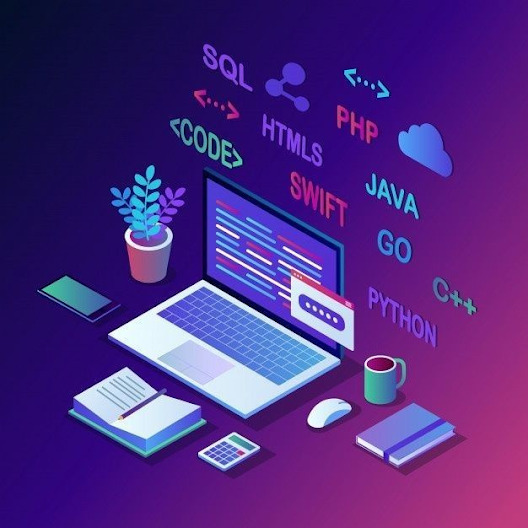
Ngôn ngữ lập trình là gì
Ngôn Ngữ Lập Trình Là Gì?
Ngôn ngữ lập trình là một tập hợp các quy tắc cú pháp và ngữ nghĩa được sử dụng để viết mã lệnh, cho phép máy tính thực thi các tác vụ cụ thể. Nói đơn giản, đây là cách con người "ra lệnh" cho máy tính thông qua các đoạn mã (code). Mỗi ngôn ngữ lập trình được thiết kế để ph��c vụ một mục đích cụ thể, từ phát triển web, ứng dụng di động, đến trí tuệ nhân tạo và phân tích dữ liệu.
Có hai loại ngôn ngữ lập trình chính:
Ngôn ngữ cấp cao: Dễ hiểu và gần với ngôn ngữ tự nhiên, ví dụ: Python, JavaScript, Java.
Ngôn ngữ cấp thấp: Gần với ngôn ngữ máy, khó học hơn nhưng kiểm soát phần cứng tốt hơn, ví dụ: Assembly.
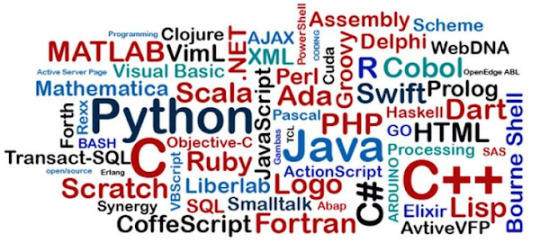
Các ngôn ngữ lập trình
Tại Sao Ngôn Ngữ Lập Trình Quan Trọng?
Ngôn ngữ lập trình là nền tảng của mọi sản phẩm công nghệ mà chúng ta sử dụng hàng ngày, từ ứng dụng trên điện thoại, website, đến các hệ thống quản lý doanh nghiệp. Dưới đây là vai trò chính của chúng:
Phát triển phần mềm và ứng dụng: Các ngôn ngữ lập trình như Java, Swift, hay Kotlin được dùng để xây dựng ứng dụng di động và phần mềm.
Xây dựng website: HTML, CSS, và JavaScript là bộ ba không thể thiếu để tạo ra các trang web hiện đại.
Phân tích dữ liệu và AI: Python và R là lựa chọn hàng đầu cho khoa học dữ liệu và học máy.
Tự động hóa: Ngôn ngữ lập trình giúp tự động hóa các tác vụ lặp đi lặp lại, tiết kiệm thời gian và nguồn lực.
Học ngôn ngữ lập trình không chỉ mở ra cơ hội việc làm mà còn rèn luyện tư duy logic và khả năng giải quyết vấn đề.
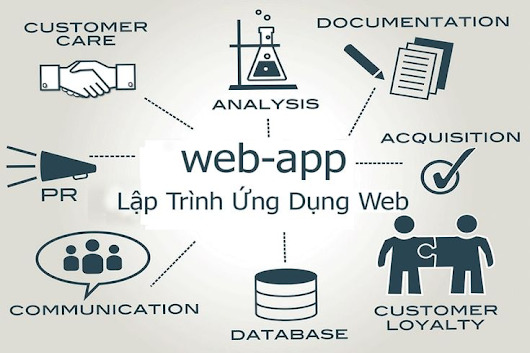
Ứng dụng của ngôn ngữ lập trình
Top 5 Ngôn Ngữ Lập Trình Phổ Biến Nhất 2025
Dựa trên nhu cầu thị trường và xu hướng công nghệ, dưới đây là danh sách các ngôn ngữ lập trình được sử dụng nhiều nhất hiện nay:
1. Python
Python nổi tiếng với cú pháp đơn giản, dễ học, và tính linh hoạt. Nó được sử dụng rộng rãi trong khoa học dữ liệu, trí tuệ nhân tạo, học máy, và phát triển web (với framework như Django, Flask).
Ưu điểm: Dễ học, cộng đồng lớn, thư viện phong phú.
Ứng dụng: Google, Netflix, và Spotify đều sử dụng Python.
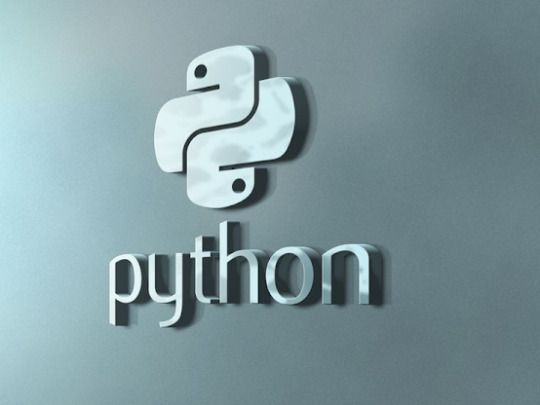
Python
2. JavaScript
JavaScript là “vua” trong phát triển web, giúp tạo ra các trang web tương tác, động. Với sự hỗ trợ của các framework như React, Angular, và Vue.js, JavaScript ngày càng phổ biến.
Ưu điểm: Chạy trên mọi trình duyệt, linh hoạt.
Ứng dụng: Facebook, Twitter, và các website lớn đều dựa vào JavaScript.
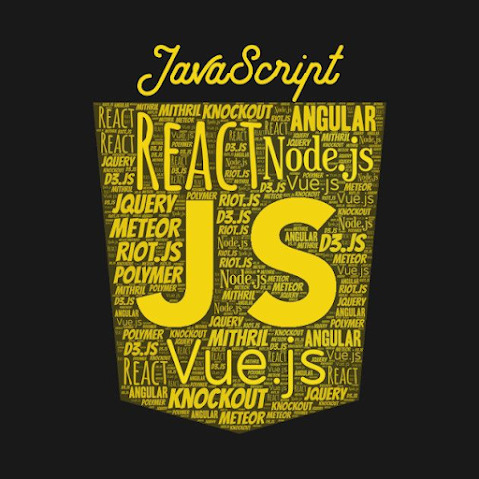
JavaScript
3. Java
Java là một ngôn ngữ lập trình mạnh mẽ, được sử dụng rộng rãi trong phát triển ứng dụng doanh nghiệp, ứng dụng Android, và hệ thống backend.
Ưu điểm: Độc lập nền tảng, bảo mật cao.
Ứng dụng: Các hệ thống ngân hàng, thương mại điện tử lớn.

Java
4. C#
C# được phát triển bởi Microsoft, thường dùng trong phát triển trò chơi (với Unity), ứng dụng Windows, và hệ thống doanh nghiệp.
Ưu điểm: Hiệu suất cao, tích hợp tốt với hệ sinh thái Microsoft.
Ứng dụng: Các trò chơi như Among Us được xây dựng bằng C# và Unity.
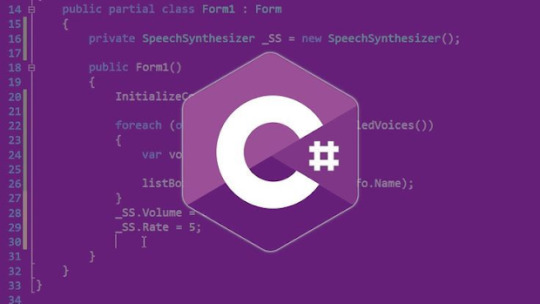
C#
5. TypeScript
TypeScript là phiên bản mở rộng của JavaScript, bổ sung tính năng kiểm tra kiểu dữ liệu, giúp mã code an toàn và dễ bảo trì hơn.
Ưu điểm: Tăng cường hiệu suất cho các dự án lớn.
Ứng dụng: Các dự án web quy mô lớn như những dự án của Microsoft và Google.
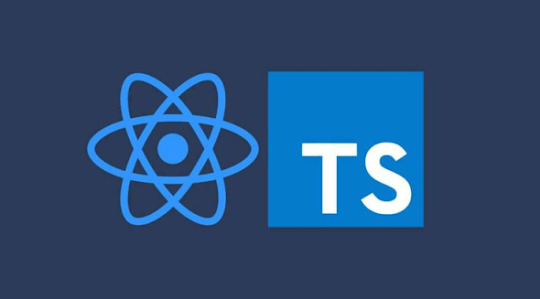
TypeSCript
Làm Thế Nào Để Chọn Ngôn Ngữ Lập Trình Phù Hợp?
Việc chọn ngôn ngữ lập trình phụ thuộc vào mục tiêu nghề nghiệp và sở thích cá nhân. Dưới đây là một số gợi ý:
Nếu bạn muốn làm phát triển web, hãy bắt đầu với JavaScript hoặc TypeScript.
Nếu bạn yêu thích trí tuệ nhân tạo hoặc khoa học dữ liệu, Python là lựa chọn lý tưởng.
Nếu bạn hướng đến phát triển ứng dụng di động, hãy học Java hoặc Swift.
Nếu bạn muốn làm trò chơi, C# và Unity là bộ đôi hoàn hảo.
Ngoài ra, hãy cân nhắc:
Cộng đồng hỗ trợ: Các ngôn ngữ lập trình như Python và JavaScript có cộng đồng lớn, dễ tìm tài liệu học.
Nhu cầu thị trường: Kiểm tra các tin tuyển dụng để biết ngôn ngữ lập trình nào đang được săn đón.
Tính dễ học: Python thường được khuyên dùng cho người mới bắt đầu.

Làm thế nào để chọn ngôn ngữ phù hợp
Kết Luận
Ngôn ngữ lập trình là chìa khóa mở ra thế giới công nghệ, từ việc xây dựng website, ứng dụng, đến phát triển trí tuệ nhân tạo. Việc nắm bắt ngôn ngữ lập trình là gì và học các ngôn ngữ lập trình phổ biến như Python, JavaScript, Java, C#, và TypeScript sẽ giúp bạn tiến xa trong sự nghiệp. Hãy xác định mục tiêu, chọn ngôn ngữ lập trình phù hợp, và bắt đầu hành trình chinh phục công nghệ ngay hôm nay!Thêm chút động lực
🚀 Java Highlight – Nơi chia sẻ kiến thức lập trình hiệu quả và dễ hiểu! Tìm hiểu về các ngôn ngữ lập trình phổ biến, đặc biệt là Java, qua những bài viết chất lượng, ví dụ thực tế và hướng dẫn rõ ràng.
👉 Khám phá thêm tại: Java Highlight
#JavaHighlight#NgonNguLapTrinhLaGi#TopNgonNguLapTrinh#HocLapTrinhJava#LapTrinhChoNguoiMoi#LapTrinhWeb#JavaCanBan#LapTrinhHieuQua#CodingVietnam#DevHocCode#LapTrinhTuHoc
1 note
·
View note
Link
0 notes
Text
The Six Most Popular Cross Platform App Development Frameworks in 2025

Building apps that run smoothly on both iOS and Android has become a necessity for businesses aiming to reach wider audiences without doubling their development costs. This is where Cross Platform App Development Frameworks come into play. By using these frameworks, companies can create a single codebase that works across multiple operating systems, saving time, effort, and resources. Whether you’re exploring cross-platform app development or looking for the best cross platform app development framework, knowing the top options is crucial for informed decisions.
In this article, we highlight six of the most popular frameworks dominating cross platform mobile app development in 2025.
1. React Native
React Native by Meta (formerly Facebook) continues to be one of the most widely used frameworks for mobile app development. Its key strength lies in allowing developers to write code in JavaScript and render it natively, ensuring high performance similar to native apps. React Native also benefits from a massive developer community, pre-built components, and strong integration capabilities with native APIs. Many cross-platform app development companies rely on React Native for building scalable and visually appealing mobile solutions.
2. Flutter
Flutter, developed by Google, has gained remarkable popularity due to its “write once, run anywhere” approach. It uses the Dart programming language and offers a rich set of pre-designed widgets for creating beautiful UIs. Its hot reload feature speeds up development cycles, making it an ideal choice for startups and enterprises seeking efficient mobile app development services. Flutter’s ability to deliver near-native performance makes it a top contender for businesses looking for robust cross platform app development services.
3. Xamarin
Owned by Microsoft, Xamarin leverages the C# language and .NET framework to build apps that share most of their code across platforms. Xamarin provides access to native APIs and offers tools to ensure performance and UI consistency across iOS and Android. For businesses already invested in Microsoft’s ecosystem, Xamarin serves as one of the best cross platform app development frameworks due to its seamless integration with Azure and Visual Studio.
4. Ionic
Ionic is known for its open-source nature and its ability to build hybrid mobile applications using standard web technologies like HTML, CSS, and JavaScript. Ionic apps are powered by Angular, React, or Vue, and they work seamlessly across devices. For companies focusing on web-first solutions transitioning into mobile, Ionic offers cost-effective cross platform app development services.
Book an Appointment
5. NativeScript
NativeScript stands out by enabling developers to create truly native apps using JavaScript, TypeScript, or Angular. It provides direct access to native APIs, which enhances performance and user experience. NativeScript is often favored by cross platform mobile app development teams working on complex applications that demand high customization and access to device hardware features.
6. Apache Cordova (PhoneGap)
Cordova (previously known as PhoneGap) is one of the earliest frameworks in the mobile app development framework ecosystem. It allows developers to use web technologies to package apps into native containers. Although less popular than newer frameworks like Flutter or React Native, Cordova remains a reliable option for simple apps and rapid prototyping, especially for businesses with limited budgets seeking mobile app development solutions.
Why Choose the Right Framework?
Selecting the right framework is critical to balancing cost, performance, and scalability. A trusted cross platform app development company can analyze project requirements and recommend the most suitable option—be it React Native for scalability, Flutter for UI excellence, or Xamarin for Microsoft integration.
By leveraging these frameworks, businesses can accelerate product launches, cut development costs, and deliver consistent user experiences across devices.
Final Thoughts
The demand for cross platform mobile app development will continue to rise as businesses look to target users on multiple platforms simultaneously. Partnering with experienced professionals offering mobile app development services ensures your app is built using the right tools and frameworks to meet both current and future needs.
0 notes
Text
Best ExtJS UI Components for Modern UIs in 2025
In 2025, web development isn’t just about making things look good. It’s about building apps that are fast, responsive, and easy to manage. Developers need strong tools that can handle everything from layout to data visualization. That’s why Ext JS remains one of the top choices for serious projects.
It’s not just another JavaScript framework. Ext JS is made for performance. It gives you all the tools you need to create large, enterprise-grade applications. You don’t have to search for third-party plugins or combine multiple libraries. With ExtJS Pre-Built Components, you get a complete set of UI elements that work well out of the box.
Why Ext JS Still Leads in 2025
Modern developers want speed, simplicity, and control. Ext JS offers that. It gives you pre-built grids, charts, forms, calendars, buttons, menus, and a lot more. These aren’t basic widgets, they’re advanced components that can handle real-world tasks like sorting, filtering, editing, and displaying large datasets without lag.
If you’re building dashboards, internal admin panels, or client-facing portals, Ext JS helps you save time. It also ensures your app runs smoothly on all devices. From desktops to tablets and mobile phones, everything adjusts automatically. You don’t have to write separate code or rely on external responsive libraries.
Themes That Save Time and Keep Design Clean
Styling is one of the hardest parts of app development. You want your app to look modern and professional, but writing custom CSS for every screen can be frustrating. That’s where ExtJs themes make a big difference.
Instead of dealing with raw CSS files, you can change fonts, colors, spacing, and layouts. It’s a simple, visual way to style your app. Whether you want a light theme, dark mode, or something that matches your brand, the theming tools are easy to use. You can create a consistent look across the whole app without digging into stylesheets. This saves hours during development and makes updates easier in the long run.
Real Power for Data-Heavy Applications
Many modern web apps deal with massive amounts of data. Whether it’s a dashboard for stock market trends or a backend system for hospitals or logistics, you need components that can handle complexity. Ext JS offers a Grid component that’s fast, flexible, and customizable. You can sort, filter, group, paginate, and even edit data in real-time.
For more advanced needs, the Pivot Grid lets you create Excel-style views where users can drag and drop data fields. You can build real-time reports, summaries, and comparisons right inside your app. Combined with live charts, Ext JS allows you to turn raw data into smart visualizations in just a few clicks.
Built-in Support for Forms and Inputs
Collecting user input is a basic task, but doing it well is another story. Ext JS gives you a wide range of form elements like text fields, dropdowns, sliders, date pickers, and checkboxes. These come with built-in validation, bindings, and layout controls.
Instead of writing extra logic to validate forms or format user data, Ext JS handles it for you. Whether it’s a registration form, settings page, or data entry screen, you can build it quickly using Ext JS Pre-Built Components. The components behave the same across browsers and devices, which reduces bugs and makes maintenance easier.
Works Across Devices Without Extra Setup
Today’s users expect the same experience on every device, whether it’s a laptop, tablet, or phone. Ext JS offers built-in responsive design. You don’t have to write custom breakpoints or manage media queries. The layout engine automatically adjusts the size and position of components.
This is a huge time-saver when building Progressive Web Apps. Ext JS supports offline access, fast loading, and push notifications, all using the same codebase. You can even convert your app into a mobile-ready version without starting from scratch.
Speed and Performance That Scales
When apps grow, performance becomes a real challenge. Ext JS handles this with smart features like virtual scrolling, lazy loading, and data handling. It helps you load only what’s needed, when it’s needed.
That means smoother interfaces, faster page loads, and a better experience for users, even when you’re dealing with massive data sets. In fact, for enterprise-scale needs, Ext JS is often more stable and less buggy than frameworks that rely on stitching together multiple libraries.
Backed by a Strong Developer Community
A good framework needs a strong developer base, and Ext JS has it. With years of use in enterprise environments, the community is active and experienced.
Whether you’re a beginner or an experienced developer, you’ll be able to understand how the components work and how to get the most out of them. You also get access to tools like for automated testing and for visual UI building.
Used in Real Business Applications
Ext JS isn’t just popular in theory, it’s used in real business apps every day. It powers financial dashboards that need live data updates, healthcare apps with strict compliance needs, eCommerce admin tools with advanced filters, and even logistics platforms with live tracking features.
These apps rely on the stability and scalability of Ext JS. They use ExtJs themes for clean branding and rely on ExtJS UI Components to save time and ensure consistency. Whether you’re building a startup MVP or an enterprise platform, Ext JS adapts to your needs.
Final Thoughts: Why Choose Extnuke by Imbibe Tech
In 2025, choosing the right tools can decide how fast you build and how well your app performs. Ext JS continues to lead with strong, reliable components that just work. It supports modern layouts, responsive design, and full integration.
If you’re looking for custom solutions, expert help, or just want to explore what Ext JS can really do, Extnuke by Imbibe Tech is here to help. We build custom themes, offer UI support, and create modern solutions based on Ext JS for teams of all sizes.
Visit Extnuke to discover how we can help you deliver modern apps faster, with cleaner code, smoother UIs, and better performance.
Originally published at https://www.extnuke.com on July 21, 2025.
0 notes
Text
What’s Really Happening in Web Development in 2025? (And Why You Should Care)
If you’ve been online in the last five minutes, you already know the web is changing—fast. The way websites are built, how they look, and even how they think is evolving. Whether you're a curious creator, indie coder, or just someone who loves beautiful, fast websites, this post breaks down what’s really going on in web development in 2025 — no jargon, just clarity.
Websites in 2025 = Speed + Style + Smarts
Gone are the days when websites were just static pages with fancy text. Now they’re:
Lightning-fast
Smart and interactive
Personalized for each user
Mobile-first (or even mobile-only!)
Built using AI and futuristic tools
Let’s dive into the cool stuff powering today’s web.
The Tech Behind Modern Websites
Even if you don’t code, you’ve probably heard words like React, Next.js, or WordPress thrown around. These are part of the web development tech stack — the tools devs use to build websites.
Here’s a simplified rundown of what’s happening:
1. Frontend Magic (What You See)
Think of this as the “storefront” of the internet. In 2025, devs are using tools like:
React.js – makes your website feel like an app
SvelteKit & Vue – for lightweight, smooth interactions
Tailwind CSS – helps devs build beautiful designs fast
These tools make pages more responsive, animated, and fun to use.
2. Backend Brains (What You Don’t See)
Behind every website is a server doing the heavy lifting. In 2025, devs are moving to things like:
Node.js + APIs – connect your site to databases and tools
Headless CMS (like Sanity, Strapi) – separate the content from the design
Serverless Functions – no more traditional servers, just code that runs when you need it
Why? It's faster, easier to scale, and more secure.
AI Is Now in Your Website (And It’s Cool)
We’re not talking sci-fi robots. AI is helping:
Auto-generate content layouts (with tools like Framer AI)
Personalize the experience for each visitor
Write and clean up code
Improve SEO and performance
Even designers are using tools like Uizard or Figma AI to create page layouts instantly from text prompts. AI is making web design faster and smarter, not soulless.
Mobile-First or Nothing
Let’s be honest — most of us browse the internet on our phones. Developers know this. That’s why mobile-first design is now standard.
What does that mean?
Buttons are bigger
Menus are easier to tap
Pages load faster on 4G
Everything resizes perfectly across devices
If a website looks weird on mobile in 2025… it’s already outdated.
Web Security in 2025 = Non-Negotiable
We’re online all the time, sharing data, shopping, creating accounts. That’s why web security is a top concern.
Today’s websites come with:
End-to-end encryption
Secure authentication (like sign-in with Google, OTPs, etc.)
Firewalls & threat detection bots
Data compliance for global privacy laws (think GDPR)
If you’re building or running a website, security can’t be an afterthought—it’s the foundation.
Why Performance (and SEO) Still Rule
No matter how pretty your site is, if it’s slow, users bounce. That’s why devs optimize Core Web Vitals in 2025:
LCP (Load time)
CLS (Visual stability)
FID (Interactivity delay)
Also, search engines reward fast, clean, mobile-friendly websites. If you want visibility, performance = SEO gold.
Web Design Is Now a Vibe
In 2025, design trends are all about:
Dark mode everything
Glassmorphism and neo-brutalism
Micro-animations
Custom 3D elements
Accessible, inclusive UX
Websites aren’t just functional—they’re expressive. Your brand's voice now shines through layout, color, motion, and tone.
Who’s Building the Web?
Here’s the fun part: ANYONE can build a site now.
Developers use custom code, APIs, and full frameworks.
Designers use Webflow, Framer, and Figma.
Beginners start with Wix, Squarespace, or Carrd.
DIYers and creators even launch shops using Shopify or BigCommerce.
No matter your skill level, there’s a tool for you.
What's Next?
Web development in 2025 isn’t just about code—it’s about experience. The best websites:
Load instantly
Feel personal
Are accessible to all
Run securely in the background
Look across every screen
If you’re creating anything online—a blog, shop, portfolio, zine, game, or service—learning even the basics of web development can give you power and freedom.
And trust us, that’s only going to grow.
Final Thoughts
You don’t need to be a full-stack engineer to appreciate how the web works in 2025. But knowing a little bit goes a long way—especially if you're building your digital presence.
So whether you’re exploring your first portfolio or dreaming of launching your own SaaS, now is a brilliant time to start learning web dev—or collaborating with someone who does.
0 notes
Text
Why Java Full Stack Development Is the Ultimate Career Starter for Freshers in Today’s IT World
In a tech-driven world where competition is fierce and job markets shift rapidly, fresh graduates are often left wondering: “Which career path should I choose to ensure long-term stability and growth?”
If you’re a fresher looking to break into the IT industry with confidence, Java Full Stack Development stands out as one of the smartest and most future-proof choices you can make.
Let’s explore how this powerful skill set can jumpstart your career in technology.
💡 What is Java Full Stack Development?
Full Stack Development means working on both the frontend (what users see) and the backend (server logic, databases, APIs) of applications. A Java Full Stack Developer has expertise across the full software lifecycle—from designing interfaces to deploying server-side code and managing databases.
Key Technologies You’ll Master:
Frontend: HTML, CSS, JavaScript, Angular or React
Backend: Core Java, Advanced Java, Spring Boot, Hibernate
Database: MySQL, MongoDB
Tools & APIs: REST APIs, Git, Maven, Jenkins, Docker
This stack is widely used in sectors like banking, e-commerce, healthcare, logistics, and more.

🌟 Why Java is the Perfect Starting Point for Beginners
Java has been a dominant force in software development for over 25 years—and for good reason.
Here’s why it’s ideal for freshers:
✅ Beginner-Friendly – Especially for students from engineering or computer science backgrounds ✅ Platform-Independent – Code once, run anywhere ✅ Scalable & Reliable – Trusted by startups and enterprises alike ✅ Strong Ecosystem – Spring Boot, Hibernate, and Microservices simplify backend development ✅ Global Community – Thousands of resources, forums, and mentors available
🎯 Benefits of Learning Java Full Stack as a Fresher
Here’s how Java Full Stack sets you apart in today’s job market:
More Career Options – One skill set opens doors to multiple roles
Higher Entry-Level Salaries – Full stack developers earn more than backend-only or frontend-only roles
Complete Project Ownership – Understand the full software cycle, making you a valuable asset to employers
Career Mobility – Easily transition into DevOps, cloud, QA, or project management
Freelance & Remote Work Ready – Build projects or work with global clients from anywhere
Solid Technical Foundation – Java teaches critical software principles that scale
📊 Job Market Snapshot: High Demand in 2025
🔍 1.2+ lakh active Java Full Stack job listings on platforms like Naukri, LinkedIn & Indeed
🏢 Top recruiters: TCS, Infosys, Wipro, Accenture, Cognizant, and numerous startups
📈 Java remains the base language for over 70% of full stack roles across industries
🛠️ Java Full Stack Learning Roadmap (Beginner-Friendly)
Here’s a step-by-step path to become job-ready in just a few months:
Core Java – OOPs, Collections, Exception Handling
Advanced Java – JDBC, Servlets, JSP
Frontend Technologies – HTML5, CSS3, JavaScript, React or Angular
Spring Framework – Spring Boot, Spring MVC
Databases – MySQL (SQL) + MongoDB (NoSQL)
Version Control & DevOps – Git, Maven, Jenkins, Docker
Real-World Projects – Build portfolio-worthy, deployable applications
Interview Preparation – Data Structures, System Design, Mock Interviews
🎓 How Ashok IT Helps You Succeed (With 100% Placement Support)
At Ashok IT, we don’t just teach Java Full Stack—we guide you every step of the way toward landing your first job.
What You Get:
🧑🏫 Live Interactive Classes with industry professionals
📝 Assignments & Real-Time Projects after every module
🎥 Recorded Sessions for easy revision
🤝 One-on-One Doubt Clearing & mentorship
📄 Resume Building + Mock Interviews
🧲 100% Placement Assistance with a dedicated HR support team
🏢 Offline (Hyderabad - Ameerpet) + Online Batches available
Join our successful alumni now working at top IT companies across Hyderabad
❓ FAQs: Freshers Usually Ask
🟩 Is Java still relevant in 2025? Absolutely. It’s the foundation of many large systems and modern applications.
🟩 Can I learn Java Full Stack without any coding background? Yes! Our course starts from scratch, no prior experience needed.
🟩 How long does it take to become job-ready? With focused effort, 4–6 months is enough to get interview-ready.
🟩 What if I don’t get placed right away? We offer continued support, mock interviews, and re-training until you’re placed.
📢 Start Your IT Career with Confidence
Java Full Stack is more than a course—it’s a career launchpad. Whether you’re tired of rejections or just starting your tech journey, now is the time to invest in your future.
🎁 Join Our Free Demo Class at Ashok IT
🔗 Enroll Now: www.ashokitech.com 📞 Call: +91 9059868766
✅ Learn in-demand skills ✅ Get placement-ready ✅ Launch a successful career in IT
Don’t wait for opportunities—prepare yourself to grab them. Take your first step with Ashok IT today.
#Java Full Stack Course#Java Full Stack Training#Java for Freshers#Java Training Institute#Java Full Stack Jobs#Java Full Stack Career#Best Java Full Stack Course for Freshers#Java Full Stack Course in Hyderabad#Java Full Stack training in Hyderabad#ava Full Stack training institute in Hyderabad
1 note
·
View note
Text
Why Every QA Tester Needs a Selenium Testing Professional Certification in 2025
Introduction
The software testing industry is shifting at lightning speed. Manual testing alone is no longer enough to stay competitive. Automation is the future—and selenium testing certification is your ticket to becoming an in-demand QA expert.
If you’re considering upskilling, here’s why enrolling in a selenium certification course and becoming a certified selenium testing professional is one of the smartest career moves you can make this year.
🚀 Automation is Non-Negotiable
Top companies now require automation as part of their core testing strategy. Selenium, being an open-source and widely adopted tool, dominates the testing ecosystem.
A selenium certification not only validates your expertise but also proves that you can create robust automation frameworks, integrate with DevOps pipelines, and handle real-world testing challenges.
🎯 What Makes the GSDC Selenium Certification Unique?
The GSDC selenium certification course is designed for practical, job-ready skills. Here’s what you’ll gain:
Hands-on mastery of Selenium WebDriver, Grid, and TestNG.
Deep understanding of XPath, CSS Selectors, and automation frameworks.
Real-world experience in CI/CD integrations with tools like Jenkins and Docker.
After clearing the selenium certification exam, you’ll hold a globally recognized selenium certificate that validates your professional expertise.
💰 Selenium Certification Cost vs. ROI
The selenium certification cost is relatively low—often under $150. Yet, the potential return on investment is massive. Automation testers with certifications can command salaries between $80K–$120K annually, depending on experience and region.
📝 Exam Prep for Success
The selenium certification exam emphasizes practical application over theory. To pass, you’ll need a solid grasp of automation scripting, debugging, and framework design. GSDC provides study guides and practice questions to ensure you're ready for success.
🌐 Career Benefits of a Selenium Certificate
With a selenium testing certification, you open doors to roles like:
Automation QA Engineer
SDET (Software Development Engineer in Test)
Test Automation Architect
Selenium Specialist or Consultant
These roles are among the fastest-growing positions in QA and DevOps, making your selenium certification a career accelerant.
🔥 Why 2025 is the Best Year to Get Certified
The push for continuous delivery, AI-powered testing, and cloud-based test automation means certified selenium testing professionals are in greater demand than ever before.
If you want to stay ahead of the curve, now is the time to enroll in a selenium certification course and secure your selenium certificate.
🎯 Final Takeaway
A selenium testing certification is more than a credential—it’s proof that you can lead in automation-first environments. Whether you’re starting your automation journey or looking to advance, the GSDC selenium certification exam will give you the confidence and credibility to stand out.
For More Information: - https://www.gsdcouncil.org/certified-selenium-testing-professional
Contact:- +41 41444851189
0 notes
Text
Full Stack Developer Salary in 2025: How Much Can You Earn?

Did you know that full stack developers rank among the top earners in tech, with salaries soaring up to $159,917? As companies race to build seamless digital experiences, they’re searching for developers who can do it all—front-end, back-end, and everything in between.
From fast-moving startups to industry giants, businesses need professionals who can take an idea from concept to deployment. That’s why mastering full stack development isn’t just a career move—it’s a ticket to high-paying roles, career flexibility, and global opportunities. Whether you’re starting from scratch or looking to level up, now is the time to dive in.
Let’s explore why full stack development is one of the hottest skills in tech—and how you can earn fancy salaries in this domain.
What Determines Your Earning Potential as a Full Stack Developer?
A career as a full stack developer offers significant earning potential, but salaries vary based on experience, location, industry, and skill set. Let’s break down these key factors in detail to help you understand how to maximize your earning potential.

A. Experience Level: How Much Can You Earn?
Your experience level is one of the biggest factors influencing your salary. As you gain expertise, you’re earning potential increases significantly.
1. Entry-Level (0-2 Years): Getting Started
At this stage, you are expected to be proficient in basic web development tools like HTML, CSS, JavaScript, and at least one backend language (e.g., Node.js, Python, Java). Employers value a solid understanding of databases, APIs, and version control (Git/GitHub).
Your salary at the entry-level will vary based on the country you are working in. Some of the salary ranges in key countries are given below:
USA: $85,000 – $107,000 per year
India: ₹4-10 LPA
UK: £35,000 – £50,000 per year
Canada: CAD 70,000 – 90,000 per year
Source- Multiple Sources- Glassdoor, Indeed
2. Mid-Level (2-4 Years): Building Expertise
Developers at this stage have hands-on experience with front-end frameworks (React, Angular, Vue) and backend frameworks (Express.js, Django, Spring Boot). Knowledge of cloud services (AWS, Azure, Google Cloud) is a huge plus.
At the mid-level, as a full stack developer, your salary increases significantly depending on the country you are working in.
USA: $142,000 – $223,000 per year
India: ₹12-20 LPA
UK: £55,000 – £75,000 per year
Canada: CAD 100,000 – 130,000 per year
Source- Multiple Sources- Glassdoor, Indeed
3. Senior-Level (4+ Years): Leadership & Specialization
Senior full stack developers lead projects, mentor teams, and build scalable applications. They often specialize in DevOps, AI integration, microservices, or blockchain development.
As a senior-level full stack developer, your salary is likely to be higher due to your leadership role. Often, you’ll be leading a full team, and your compensation will reflect the responsibilities and impact of your position.
USA: $243,000+ per year
India: ₹22-40 LPA
UK: £85,000+ per year
Canada: CAD 150,000+ per year
Source- Multiple Sources- Glassdoor, Indeed
B. Geographic Location: Where You Work Matters
While country plays an important role in the kind of salary that you may receive, location also has a strong role. Both within the US and India, the city you work in will impact the kind of salary you may get due to the cost of living and demand for tech talent.
Certain cities that have been tech strongholds within a country often pay the highest. Some of the cities that you could explore for high-paying jobs are:
Top-Paying Cities for Full Stack Developers
Full Stack Developers are in high demand globally, and salaries vary significantly depending on the city. In the United States, San Francisco tops the list with an impressive average annual salary of approximately $157,000, followed by New York, where developers earn around $145,000. Across the Atlantic in the UK, London offers competitive compensation, averaging around £75,000 per year. In Canada, Full Stack Developers in Toronto can expect to earn roughly CAD 120,000 annually. Meanwhile, in India, tech hubs like Bangalore and Mumbai also offer lucrative opportunities, with average salaries ranging between ₹18–25 LPA and ₹15–22 LPA, respectively. These figures reflect the global appreciation for skilled developers and the evolving tech landscapes in these key cities.
Tip: If you’re in India, targeting Bangalore, Hyderabad, Pune, or Gurgaon can yield higher salaries due to tech industry concentration.
C. Industry: Which Sectors Pay the Most?
Some industries offer higher compensation due to the higher demand for digital transformation within this domain. Some of the key domains you could explore as a full stack developer in order to maximize your earning potential are:

Technology (software, AI, and cloud computing): All tech companies, such as Google, IBM, and others, invest heavily in cutting-edge software and innovation and regularly hire full stack engineers.
Finance & FinTech (Banking, Cryptocurrencies, Trading Platforms): Due to their high demand for secure, scalable platforms, these industries are high-pay masters.
Healthcare Tech (Health Apps, Telemedicine, Data Security): Healthcare and healthcare tech are high-growth industries and, therefore, offer high-paying salaries.
E-commerce & Retail (Online Marketplaces, Logistics Automation): Companies like Amazon, Shopify, Flipkart (India), and others like them that operate in the online e-commerce space have a strong need for full stack developers who are capable of building a full stack application.
EdTech & SaaS (Learning Platforms, Cloud Solutions): This is another industry that is on a high-growth trajectory. Companies like Coursera, SkillUp, Salesforce, and Adobe operate on a global scale and provide online subscription-based services.
D. Skill Set: What Should You Learn?
To improve your opportunity for a higher pay packet as a full stack developer, it is critical to have certain deep skills. A strong tech stack can boost your salary and job opportunities. Some of the must-have skills are:
Front-end: HTML, CSS, JavaScript, React.js, Vue.js, Angular
Back-end: Node.js, Express.js, Django, Flask, Ruby on Rails, Java Spring Boot
Databases: SQL (PostgreSQL, MySQL), NoSQL (MongoDB, Firebase)
Version Control: Git, GitHub, GitLab
Cloud & DevOps: AWS, Docker, Kubernetes, CI/CD Pipelines
Cybersecurity Basics: Authentication, Encryption, OWASP Security Practices
Soft Skills: Problem-solving, Communication, Teamwork
Your experience level, location, industry, and skill set play a major role in determining your salary. If you’re aiming for higher earnings, focus on building a strong portfolio, upskilling in trending technologies, and exploring high-paying industries.
Projected Salary Trends for 2025
The demand for full stack developers is set to rise significantly in 2025, driven by digital transformation, AI integration, and remote work expansion. This will lead to higher salaries and more global job opportunities for skilled developers. Full stack developers with cloud computing, AI, and blockchain expertise are likely to see the highest salary increases, given how these industries are growing.
The growth of remote work and hiring on a global scale are also likely to impact salary growth in 2025. As the local source of talent dries up, especially in high-tech zones. If you are seeking to make a career for yourself as a full stack developer, focus on high, in-demand skills today such as AI & machine learning, cloud computing, and DevOps and cybersecurity.
Strategies to Enhance Earning Potential
To maximize your earnings as a full stack developer, you need more than just coding skills. A strategic approach to continuous learning, skill diversification, and professional networking can help you command higher salaries and better job opportunities.
Technology evolves rapidly, and staying updated is key to career growth. Some ways to stay updated are:
Learn advanced frameworks and tools like js, NestJS, and GraphQL.
Gain expertise in cloud computing (AWS, Google Cloud, Azure).
Consider certifications that validate your skills and boost your credibility.
Employers also value developers who have gone beyond traditional full stack roles and acquired additional skills such as:
DevOps & CI/CD: Docker, Kubernetes, Jenkins
AI & Automation: Python AI libraries, OpenAI APIs
Cybersecurity: Web security best practices
Mobile Development: React Native, Flutter
Navigating Your Career Path as a Full Stack Developer
The future for full stack developers in 2025 is bright, with rising demand, increasing salaries, and global job opportunities. However, to maximize your earning potential, you must focus on continuous learning, skill diversification, and strategic networking.

If you would like to know more about how you can get the necessary hands-on experience and get started, contact our Learner Support Team at [email protected]. They will be more than happy to guide you on your next steps.
Originally published on March 7, 2025, by SkillUp, the article " Full Stack Developer Salary in 2025: How Much Can You Earn? explores current earning trends and industry insights for professionals in the field.
#Full Stack Developer Salary#Top paying cities for Full Stack Developer#Full Stack Developer Career Path#Full Stack Developer Salary Trends#full stack development skills requirements
0 notes
Text
Top Coding Classes in Chandigarh to Jumpstart Your Tech Career
In today’s rapidly evolving digital world, coding is not just a skill; it’s a superpower. Whether you're a recent graduate, a working professional looking to switch careers, or a student still exploring your options, learning how to code opens the door to a world of opportunities. Chandigarh, with its growing tech ecosystem, has become a hub for aspiring coders. The city offers several high-quality coding courses that can help you build the foundational skills needed to thrive in the tech industry. In this blog, we’ll explore why coding is essential in today’s world and highlight the top coding classes in Chandigarh that can help you kickstart a successful tech career.
Why Learn Coding in 2025?
Before diving into the specifics of institutes and programs, let’s understand why coding is such a valuable skill in 2025:
High Demand Across Industries: From healthcare and finance to entertainment and education, every industry is relying on technology. Coders are needed everywhere.
Lucrative Salaries: Coding jobs are among the highest-paid roles globally. Even entry-level developers earn impressive salaries compared to other professions.
Freelancing & Remote Work: Coding gives you the flexibility to work from anywhere, even as a freelancer or remote developer.
Entrepreneurship Opportunities: Want to build your own app or start a tech company? Coding gives you the tools to bring your ideas to life.
Problem Solving & Creativity: Beyond the technical aspect, coding enhances your problem-solving abilities and encourages creative thinking.
What Makes Chandigarh an Ideal City for Coding Education?
Chandigarh, known for its organized infrastructure, quality education, and student-friendly environment, has emerged as a preferred destination for IT and coding education. The city boasts:
Well-equipped training centers with modern infrastructure
Skilled trainers with real-world industry experience
Affordable living and course fees compared to metro cities
A growing tech community and startup ecosystem
Proximity to major IT hubs like Mohali and Panchkula
Key Factors to Consider Before Choosing a Coding Class
Before selecting a course or institute, keep the following in mind:
Curriculum: Ensure it includes in-demand programming languages (like Python, Java, JavaScript, C++, etc.), frameworks, and tools.
Trainers: Look for instructors who have actual coding and industry experience.
Practical Exposure: Hands-on projects and coding challenges are vital to mastering skills.
Certifications: Recognized certifications can boost your resume.
Placement Support: Institutes with placement assistance have a better track record of student success.
Top Coding Classes in Chandigarh
Here are some of the leading coding institutes that are shaping the next generation of developers:
1. CBITSS Technologies
One of the most recognized names in the city, CBITSS Technologies has carved a niche for itself in providing top-notch coding education.
Key Highlights:
Offers courses in Python, Java, Full-Stack Development, Web Development, and more.
Real-time project training under expert guidance.
Flexible class timings for students and working professionals.
Excellent placement support with tie-ups with multiple IT companies.
If you’re searching for the best place to begin your coding journey, CBITSS is certainly among the most recommended coding classes in Chandigarh. Their structured approach and industry-level training make them a contender for the best coding institute in Chandigarh.
2. WebTech Learning
This institute offers a comprehensive set of coding courses and is particularly strong in web and app development.
Courses Offered:
HTML, CSS, JavaScript, React, Angular
Python and Django
Mobile App Development with Flutter
Why Choose WebTech Learning? Their instructors are Google Certified, and the institute boasts a high student satisfaction rate.
3. BigBoxx Academy
Known for its creativity-focused programs, BigBoxx is a favorite for students interested in game development and UI/UX along with traditional coding.
Programs Include:
C, C++, Python, Java
Game development and interactive coding
Full-stack development with MERN stack
BigBoxx also organizes hackathons and bootcamps, offering students real-world coding challenges.

4. Morph Academy
A multimedia and tech training institute offering a wide array of programming courses tailored to industry trends.
Standout Features:
Combination of theoretical and practical modules
Special sessions for competitive coding and problem-solving
Small batch sizes for personalized attention
Ideal for students looking for a balance between core programming and creative development.
5. Netmax Technologies
Focusing on job-oriented training, Netmax has designed its courses to align with current hiring trends in the IT sector.
Key Programs:
Python with Machine Learning
Java Programming with Spring Boot
Web Development with live project training
Netmax also offers internship programs and 100% placement support.
How Coding Can Shape Your Career
Still unsure if you should join a coding class? Here's how learning to code can change your career path:
Career Switch: Many professionals have successfully transitioned from non-tech fields like commerce, biology, or mechanical engineering into tech roles after learning to code.
Higher Job Stability: In uncertain economic times, coders enjoy more job security due to the essential nature of their roles.
Continuous Growth: The tech world evolves quickly. Coders are always learning, which keeps the job exciting and challenging.
Global Opportunities: With a strong coding portfolio, you can apply for jobs globally or work with international clients as a freelancer.
Coding Specializations That Are in Demand
When selecting a course, it helps to focus on a specialization that aligns with your career goals:
Web Development: Perfect for those who want to build websites or e-commerce platforms.
App Development: Learn how to create mobile apps for Android and iOS.
Data Science: Combine coding with data analysis and machine learning.
Cybersecurity: Learn how to protect systems and data from cyber threats.
Game Development: Ideal for those passionate about interactive media and gaming.
Final Thoughts
Choosing the right coding class can be a life-changing decision. With the increasing demand for skilled developers across industries, there has never been a better time to learn to code. Chandigarh, with its educational infrastructure and growing tech scene, offers some of the best opportunities for aspiring coders.
Whether you’re a complete beginner or someone looking to sharpen your existing skills, enrolling in the coding classes in Chandigarh provided by the best coding institute in Chandigarh can give you the head start you need. Choose wisely, invest your time smartly, and prepare to enter one of the most rewarding career paths of the digital age.
0 notes
Text
📱 Top Frameworks for Mobile App Development in 2025: Flutter, React Native & More
Mobile apps are now an essential part of every business. Whether you're launching a startup or growing a brand, the tools you use to build your app matter more than ever.
In 2025, the mobile development world is faster, smarter, and more competitive — and choosing the right framework is key to success.
Let’s explore the top mobile app development frameworks that developers and companies are using in 2025.
1. Flutter — Powered by Google
Flutter is one of the most popular frameworks for cross-platform mobile apps in 2025.
✅ Why Developers Love Flutter:
Single codebase for Android, iOS, web, and even desktop
Uses Dart (easy to learn)
Beautiful UI with customizable widgets
Fast performance with native-like speed
Backed by Google and a strong developer community
Best For:
Startups
MVPs (Minimum Viable Products)
Beautiful, interactive apps
2. React Native — Backed by Meta (Facebook)
React Native continues to be a favorite among developers who want to build apps using JavaScript and React.
✅ Why It’s Still a Top Choice:
Reusable code for multiple platforms
Strong plugin and component ecosystem
Great for apps with simple to moderate UI
Supported by Meta and widely adopted
Best For:
Businesses with web + mobile teams
Developers already using React
3. Swift (for iOS Native Apps)
If you're building an iOS-only app in 2025, Swift remains the go-to language and framework.
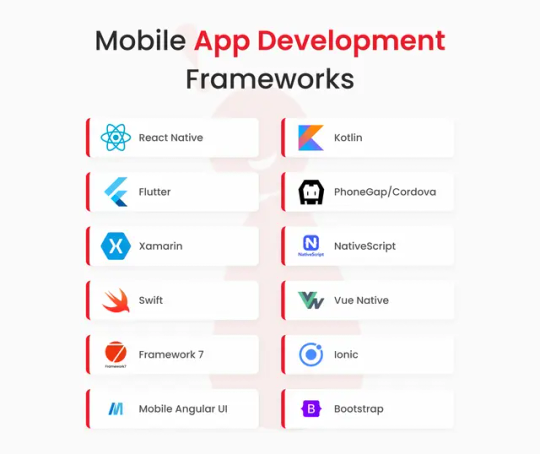
✅ Key Benefits:
Designed specifically by Apple
Clean, fast, and safe code
Full access to iOS features like Face ID, ARKit, etc.
Ideal for performance-heavy apps
Best For:
High-performance iOS apps
Apps with complex animations or integrations
4. Kotlin Multiplatform — The Android Powerhouse
Kotlin is now a first-class language for Android, and Kotlin Multiplatform allows sharing code across Android, iOS, and even web.
✅ Why Developers Choose Kotlin:
Great for Android-first projects
Native performance
Easy to share business logic across platforms
Best For:
Android apps with plans to expand cross-platform later
5. Xamarin (by Microsoft)
Though less trendy than Flutter or React Native, Xamarin still holds a place in enterprise-level development.
✅ Pros:
C# language (popular among .NET developers)
Strong integration with Microsoft tools
Good for building internal or B2B apps
Best For:
Enterprises using Microsoft tech stack
Cross-platform apps for internal teams
6. Ionic Framework
Ionic allows developers to build hybrid apps using web technologies like HTML, CSS, and JavaScript.
✅ Key Features:
Quick development
Based on web standards
Easy to maintain for teams with web dev experience
Best For:
Lightweight apps
Web-focused teams
🧠 How to Choose the Right Framework?
Here are 3 simple questions to ask:
What platforms do you want to target? (iOS, Android, Web?)
Do you need high performance or fast launch?
What tech stack is your team comfortable with?
There’s no “one-size-fits-all.” The right framework depends on your goals, budget, and timeline.
🔧 Final Thoughts
In 2025, Flutter and React Native are still top choices for building cross-platform apps quickly. Swift and Kotlin dominate native development for performance-heavy apps.
If you're building a mobile app this year, understanding these tools will help you make smarter choices — and launch faster.
🔗 Need help choosing the best framework for your app idea? Visit We3Vision Pvt Ltd — Your one-stop solution for mobile app design, development, and launch.
1 note
·
View note
Text
Best Frameworks for Desktop Application Development in 2025

As technology evolves, businesses continue to seek robust and efficient tools to build high-performance software. One area where performance, control, and reliability remain critical is desktop application development. Despite the rise of web and mobile platforms, desktop apps are still widely used across industries like finance, healthcare, engineering, and manufacturing. For organizations looking for tailored software, choosing the right framework is a key step in leveraging custom desktop application development services that deliver stability, performance, and seamless user experiences.
In 2025, a wide array of frameworks are available for desktop application development. Each comes with its strengths and trade-offs, depending on the programming language, platform, and use case. Below, we’ve highlighted some of the best frameworks developers and businesses should consider.
1. Electron
Best for: Cross-platform desktop apps with web technologies
Electron continues to dominate the cross-platform desktop app space by allowing developers to use JavaScript, HTML, and CSS. It powers major applications like Visual Studio Code, Slack, and WhatsApp Desktop.
Pros:
Supports Windows, macOS, and Linux
Large community and rich plugin ecosystem
Easy integration with Node.js and web APIs
Cons:
High memory usage
Larger application size
Electron is ideal for web developers transitioning to desktop apps or businesses that want consistent UI across platforms.
2. .NET (WPF and Windows Forms)
Best for: Windows-only applications with high performance needs
Microsoft’s .NET ecosystem is a trusted framework for building Windows desktop applications. WPF (Windows Presentation Foundation) is preferred for modern, data-driven UI, while Windows Forms is simpler and suited for traditional enterprise apps.
Pros:
Mature and stable
Excellent performance and UI rendering on Windows
Strong support and documentation
Cons:
Limited to Windows OS
Less suited for modern cross-platform needs
For Windows-centric environments, especially in corporate settings, .NET remains a go-to choice.
3. Qt
Best for: High-performance, cross-platform apps with native look and feel
Qt is a C++ framework known for building powerful, natively compiled applications that run on Windows, macOS, and Linux. It’s widely used in industries requiring speed and complex GUI applications, such as automotive and industrial software.
Pros:
High performance
Native UI elements for better user experience
Strong community and commercial support
Cons:
Steeper learning curve (especially for C++ beginners)
Licensing costs for commercial use
Qt is ideal when performance and native integration are top priorities.
4. JavaFX
Best for: Java-based desktop applications
JavaFX allows developers to build rich client desktop apps using Java. It supports 2D/3D graphics, UI controls, and CSS styling, making it an attractive choice for businesses already invested in the Java ecosystem.
Pros:
Platform-independent
Good for enterprise-level applications
Seamless integration with Java libraries
Cons:
Slower UI compared to native apps
Not as popular as it once was
For companies with a Java background, JavaFX offers a familiar and flexible environment for desktop app development.
5. Tauri
Best for: Lightweight, secure cross-platform apps using web technologies
Tauri is an emerging framework similar to Electron but much lighter and more secure. It uses Rust as the backend and allows the frontend to be built with web technologies.
Pros:
Smaller bundle sizes
Improved security features
Resource-efficient compared to Electron
Cons:
Still maturing; fewer resources and libraries
Requires Rust knowledge for backend customization
Tauri is gaining popularity in 2025 due to its focus on performance and minimal system resource usage.
How to Choose the Right Framework
Selecting the best desktop app framework depends on various factors:
Platform Requirements: Are you targeting Windows only, or do you need cross-platform support?
Language Expertise: What programming languages does your team already use?
Performance Needs: Will your app be resource-heavy or data-intensive?
UI/UX Expectations: Do you require modern, responsive design or traditional interfaces?
Integration Requirements: Does the app need to connect with other systems or devices?
By clearly identifying your business goals and user expectations, you can align your framework choice with your long-term software strategy.
Final Thoughts
In 2025, desktop applications remain a vital part of many business operations, especially where speed, control, and reliability are essential. Frameworks like Electron, .NET, Qt, JavaFX, and Tauri all offer compelling features, but the right choice ultimately depends on your project’s technical needs and strategic direction.
To make the most out of your development journey, it’s crucial to work with an experienced desktop application development company that understands both the technical and business aspects of your requirements. With the right partner, you can build secure, scalable, and future-ready desktop applications tailored for success.
0 notes
Text
Tech Skills That Get You Hired in 2025: What You Must Learn Today!
🌍 The Future Is Tech-Driven — Are You Ready? In the rapidly evolving digital landscape of 2025, technology isn't optional — it's essential. From small startups to global enterprises, every company is hungry for skilled professionals who can analyze data, build applications, market online, or automate processes. If you're a student, fresher, job switcher, or even from a non-IT background — this is the right time to upskill. At Success Root Technologies, we guide you into the tech world with job-ready skills, hands-on training, and placement support. 💡 Top 5 In-Demand Skills You Should Learn in 2025 1. Python + SQL for Analytics Ideal for: Data Analysts, Business Analysts Why? Every business runs on data. Python + SQL helps you clean, query, and visualize data with confidence. 🕒 2 months | ₹12,000 2. Excel + Power BI Ideal for: MIS Executives, Report Analysts Why? Excel is timeless, and Power BI is the future of data dashboards. Combine both and become a reporting pro. 🕒 1.5 months | ₹12,000 3. Full Stack Web Development (MERN) Ideal for: Developers, Freelancers Why? Learn how to build complete web applications using JavaScript frameworks – from UI to database. 🕒 3 months | ₹18,000 4. Digital Marketing Ideal for: SEO/Ad Executives, Freelancers Why? Everything is online. Learn how to run ads, rank websites, and build brand visibility. 🕒 2 months | ₹10,000 5. Python + Django Ideal for: Backend Developers Why? Django helps you build robust web apps fast. Combine it with Python, and you're ready for the job market. 🕒 2.5 months | ₹15,000 🔄 Best Courses for Non-IT Backgrounds (No Coding Required to Start!) Even if you’re from arts, commerce, or science, tech careers are within your reach: - Tally + GST + MS Office (for accounting/admin jobs) - Excel + Power BI (for reporting/MIS) - Web Design with HTML/CSS (for freelancers) - Digital Marketing (for social media jobs) 💼 How SRT Helps You Get Placed ✅ Resume Preparation ✅ Mock Interviews ✅ Industry Projects ✅ Career Counselling ✅ Certification Support We don’t just teach — we make you job-ready. 🌐 Learn Tech. Get Hired. Grow Fast. 📞 Call us: +91 89390 69135 🌐 Website: www.successroottech.com 📩 Email: [email protected] 📲 Follow Us for Free Tips & Career Guidance 🔹 YouTube 🔹 LinkedIn 🔹 Instagram 🔹 Facebook 🔹 Twitter Read the full article
0 notes
Text
Coding Bootcamp & PHP Training in Chandigarh
In today’s digital age, where websites, apps, and software platforms drive every industry, learning how to code is no longer optional—it’s essential. Whether you're a complete beginner or a professional looking to upgrade your skills, coding bootcamps and PHP training programs offer a fast and effective route to mastering in-demand programming languages and tools. Among the many cities in India fostering tech talent, Chandigarh is rapidly emerging as a top destination for coding education.
In this blog, we’ll dive into the rising popularity of coding bootcamps, the advantages of learning PHP, and why Coding Bootcamp & PHP Training in Chandigarh is a powerful combination to launch a successful tech career.
Why Learn Coding in 2025?
The global economy is rapidly shifting towards digitization. Businesses—from small startups to multinational giants—need skilled developers to build, maintain, and scale their digital products. Here's why learning to code has become so important:
Job Demand: Developers are among the most in-demand professionals across the globe.
High Salaries: Tech jobs offer some of the most lucrative pay packages.
Remote Opportunities: Coding opens doors to global freelancing and remote positions.
Problem Solving Skills: Coding trains you to think logically and solve real-world problems.
Versatility: Programming skills are transferable across various industries—finance, healthcare, marketing, education, and more.
With such benefits, it’s easy to see why coding is a must-have skill today.
What is a Coding Bootcamp?
A coding bootcamp is an intensive, short-term training program designed to teach students practical programming skills in a condensed timeframe—typically 3 to 6 months. Unlike traditional 3–4 year degrees, bootcamps focus on hands-on learning and real-world projects, helping students build a job-ready portfolio fast.
Key Features of Coding Bootcamps:
Accelerated Learning: Get industry-relevant skills in just a few months.
Project-Based Curriculum: Build actual websites and applications during the course.
Career Support: Many bootcamps offer resume help, interview prep, and job placement assistance.
Expert Mentorship: Learn from industry professionals with real-world experience.
Bootcamps cater to beginners and professionals alike, making them a great option for anyone serious about starting a tech career quickly.
PHP: Still a Powerful Web Language in 2025
PHP (Hypertext Preprocessor) is a widely-used, open-source server-side scripting language designed for web development. Despite the rise of newer technologies like Node.js and Python, PHP still powers over 75% of all websites that use server-side programming—including giants like Facebook, WordPress, and Wikipedia.
Why Choose PHP?
Simplicity: PHP is easy to learn, even for those without a tech background.
Large Community: PHP has a vast ecosystem of frameworks, libraries, and developers.
Cost-Effective: Open-source and widely supported by hosting services.
Career Scope: PHP developers are still in high demand, especially in CMS and e-commerce platforms.
The Importance of Location: Why Chandigarh?
Chandigarh, known for its clean design and fast-growing tech sector, is becoming a major educational hub in North India. Here's why Chandigarh is a great place to pursue coding education:
Quality Institutes: Numerous institutes offer high-quality, industry-driven training.
Affordability: Compared to metros like Delhi or Bangalore, courses in Chandigarh are more budget-friendly.
Job Opportunities: The rise of IT companies and startups in Chandigarh has boosted local employment opportunities.
Student-Friendly City: With a vibrant student culture, good infrastructure, and safety, Chandigarh is ideal for learners.
Choosing the Right Coding Bootcamp in Chandigarh
When looking for a Coding Bootcamp in Chandigarh, there are a few critical elements to consider:
Curriculum: Does it cover essential topics like HTML, CSS, JavaScript, backend languages (like PHP), and databases?
Instructors: Are the trainers experienced and actively working in the field?
Placement Support: Will you get help with interviews, resume building, and connecting with employers?
Learning Methodology: Does the course include live projects, hands-on labs, and assessments?
A good bootcamp doesn’t just teach code—it helps you apply it in real-world scenarios.
Why Combine PHP Training with a Coding Bootcamp?
One of the best combinations for aspiring web developers is learning PHP within the framework of a full coding bootcamp. While standalone PHP courses are valuable, integrating it into a broader bootcamp structure ensures you understand the entire web development stack—from frontend to backend.
Midway through your tech journey, you'll want to focus on gaining specific skills. If you're particularly interested in server-side development, you should explore PHP Training in Chandigarh alongside a structured Coding Bootcamp in Chandigarh. This dual approach will arm you with the ability to build full-fledged web applications, manage databases, and handle backend logic.

What Will You Learn?
Here’s what a well-rounded PHP and coding bootcamp curriculum typically covers:
1. Frontend Development
HTML5, CSS3
Bootstrap, JavaScript, jQuery
Responsive Design Principles
2. Backend Development
PHP Syntax and Core Concepts
Working with Forms and Sessions
File Handling and Error Management
Connecting to MySQL databases
Building CRUD Applications
3. Advanced PHP & Frameworks
Introduction to OOP in PHP
Using MVC Architecture
Laravel or CodeIgniter Framework Basics
4. Tools & Version Control
Git & GitHub
XAMPP/WAMP for local development
Debugging and Testing Tools
5. Project Development
E-commerce websites
Blog and Content Management Systems
Portfolio Website
By the end of the course, you’ll have developed multiple working projects and be ready to apply for internships or entry-level developer positions.
Career Opportunities After Completion
After finishing a coding bootcamp with PHP training, here are some job roles you’ll be eligible for:
PHP Developer
Full Stack Developer
Backend Developer
Web Application Developer
CMS Developer (WordPress, Drupal)
Freelance Web Developer
These roles come with attractive salaries, growth opportunities, and often the flexibility to work remotely.
Final Thoughts: Future-Proof Your Career
In 2025, digital transformation continues to reshape industries. From building a website for a small local business to developing large-scale enterprise applications, skilled developers are crucial. Combining the structured approach of a Coding Bootcamp in Chandigarh with specialized PHP Training in Chandigarh is a smart move for anyone looking to build a strong foundation in web development.
Whether you’re a student, a job seeker, or someone looking to switch careers, Chandigarh offers the perfect environment to kickstart your coding journey. With expert mentorship, hands-on experience, and job placement support, you can transition from zero to developer in just a few months.
#PHP Training in Chandigarh#php training institute in chandigarh#PHP Course in Chandigarh#Coding Bootcamp in Chandigarh
0 notes
Text
How a Full Stack Java Course in Pune Can Boost Your Job Prospects in 2025?

In today's fast-paced tech world, learning a versatile and powerful skillset is more important than ever especially if you're eyeing a career in software development. Nowhere is this truer than in Pune, one of India’s most flourishing IT hubs. A Full Stack Java course in Pune doesn’t just teach you how to code; it positions you as an elite problem-solver, making your resume stand out in 2025’s increasingly competitive job market. Let’s explore how!
1. Why Full Stack Java Still Dominates?
Java has stood the test of time. More than two decades after its inception, it remains a foundational technology in enterprise ecosystems:
Rich Ecosystem: With a mature set of frameworks (Spring, Hibernate), tools, and libraries, Java is everywhere—from banking systems to e-commerce behemoths.
Relevance in 2025: Even with modern languages popping up left and right, Java’s reliability, backward compatibility, and cross-platform support keep it indispensable.
Extensive Community & Resources: You're never learning alone—there’s a deep community backing you, which means readily available solutions to common challenges.
A Full Stack course doesn't just teach Java backend development; it covers databases, servers, APIs, front-end technologies everything you need to build a complete software application from scratch.
2. Pune: A Strategic Learning Ground
Thriving Industry Base Pune hosts global IT giants (like Infosys, TCS, IBM) and a myriad of mid-sized and start-up tech firms. That translates to tons of hiring and internship opportunities.
Vibrant Developer Community From Java User Group meetups to hackathons, Pune’s tech crowd is incredibly active. Networking, knowledge-sharing, and learning from peers are part of daily life here.
Access to Quality Training Pune offers a variety of dedicated institutes and online-blended courses that focus not just on coding but also on mentorship, project work, and placement training.
3. What You’ll Learn (And Why It Matters)
A full stack Java course in Pune typically covers:
Core Java Fundamentals Understanding OOP, data structures, multithreading, and collections—all essential for building scalable, robust applications.
Backend Development (Spring Boot, Hibernate) Learn to build secure, high-performing APIs, manage databases efficiently, and integrate with front-end and microservices.
Front-End Basics (HTML, CSS, JavaScript, Angular/React) Gain competence in building responsive user interfaces and creating seamless user experiences.
Database Management & Design MySQL, PostgreSQL, or MongoDB—learn how to design schemas, write optimized queries, and structure data for real-world apps.
DevOps & Cloud Fundamentals A sprinkle of AWS or Azure knowledge, along with CI/CD pipelines so you can deploy and maintain applications professionally.
Hands-On Projects From to-do apps to e-commerce platforms, working on real-world projects allows you to showcase tangible proof of skills on GitHub and your portfolio.
Each of these areas equips you with tools to solve real-world business problems and that's exactly what employers in 2025 want.
4. Placement Focus: Getting You Hired
A big differentiator of Pune’s top courses? They aren’t just about technical skill—they’re about preparing you for the job market.
Mock Interviews & Resume Workshops Practice coding challenges, whiteboard problems, and behavioral interview questions. Plus, get help tailoring your resume to highlight Java, full stack projects, and project outcomes.
Industry Connections Good institutes bring in local hiring partners, host tech talks, invite alumni, and run demo days. These openings often lead directly to internships and full-time offers.
Career Mentorship One-on-one mentorship is common—so you’re not just told what to learn, you get guided through pitfalls, interview prep, culture fit, and thoughtful career choices.
In 2025, employers seek not just coders—but developers who can see a project from concept to deployment—and that is precisely what Pune’s full stack Java courses train you to be.
5. Emerging Job Prospects in 2025
From fintech to cloud computing, here’s how markets are looking:
Fintech & Banking Java runs the backend of most core banking and payment systems. Full stack Java developers are needed to build interfaces, dashboards, APIs, and integrations.
E-commerce & Retail Tech Platforms need robust APIs, databases, microservices, and slick front-ends—full stack developers can bridge all layers.
Enterprise SaaS & Cloud Services The shift to microservices and cloud is huge—and Java plays a key role in backend services, containerization (Docker, Kubernetes), and scalable APIs.
Emerging Tech (AI/ML, IoT, Blockchain) Java excels at handling large, distributed systems. Your full stack skills let you integrate ML models or IoT devices with web dashboards.
6. What Companies Look For?
In short, employers in especially in 2025 are screening for:
Technical depth: Proficiency in Java, backend frameworks, REST APIs, databases, and at least one front-end framework.
Connected-thinking: End-to-end understanding—how client requests go from browser, through your API, across services, to the database, and back.
Clean coding & documentation: You need to know version control, writing modular and testable code, and collaborate across teams.
Cloud & DevOps awareness: It’s no longer optional; even at small firms, developers are expected to deploy, monitor, and secure their apps.
A full stack Java course in Pune is designed to help you develop exactly these job-ready competencies.
7. How to Choose the Right Course in Pune?
Here are some tips to consider:
Curriculum must be current (2025-ready) It should include Spring Boot, Angular/React 18+, Docker, and cloud fundamentals.
Look for live project work Building two to three apps in the course gives you a strong portfolio.
Strong placement record Ask alumni and check LinkedIn to confirm where graduates end up.
Flexible format If you're working, or coming from college, you’ll need evening or weekend batches with recorded lectures.
Support systems Dedicated mentors, career services, coding pads, peer groups—they make a big difference when you hit roadblocks or prepping for interviews.
8. Final Takeaways for 2025
Demand is real: Organizations still rely on Java for enterprise reliability and need full stack developers who can deliver end-to-end solutions.
Pune offers opportunity: You get quality teaching, real projects, and direct paths into local tech companies.
Your commitment matters: Want top jobs? Build apps, network, engage in communities, and demonstrate end-to-end thinking.
Course ROI is high: With the right course, you’ll accelerate your development career.
So as you think ahead to 2025, a Full Stack Java Course in Pune isn’t just another training program. It’s a launchpad a way to transform your career, sharpen your skills, and seize opportunities from fintech to SaaS and beyond. Ready to get started?
#full stack java course Pune#full stack java classes Pune#full stack java training Pune#full stack java institute Pune
0 notes